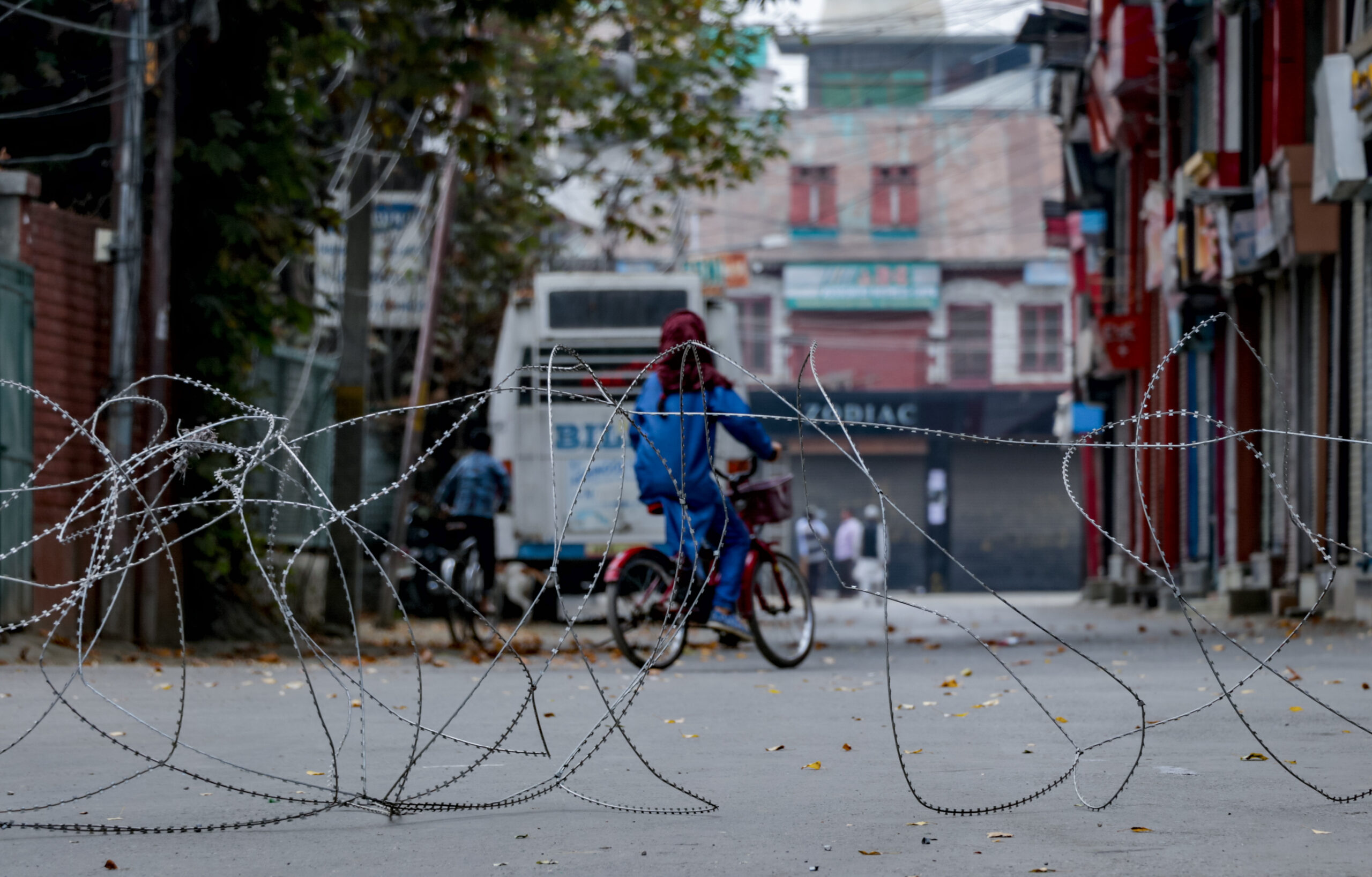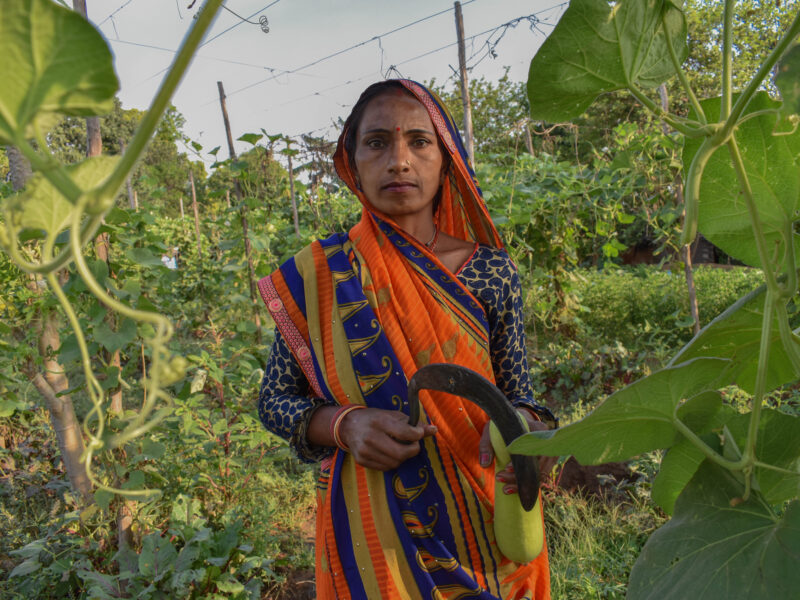The Modi government placed Kashmir under the longest internet shutdown ever imposed in a democracy.
Two prolonged lockdowns in Indian-administered Jammu and Kashmir have taken a toll on the region’s children. The first began on August 5, 2019, when the Modi government unilaterally revoked Article 370 of the constitution, which had guaranteed autonomy for the disputed region since 1947. To pre-empt protests, the government blocked internet access and phone connectivity, while the army deployed soldiers on the streets to implement draconian policies that included arrest and detention without charge, curfews, and mandatory home confinement. Schools and universities were closed for about six months. Two weeks after the military closure was lifted and schools reopened, the government in New Delhi announced a country-wide pandemic lockdown that closed all the schools and colleges in India—indefinitely. But while children in the rest of India were able to attend school online, the government refused to restore internet access in Kashmir.
The two million children of Kashmir missed nearly two years of formal schooling. Meanwhile, those from disadvantaged backgrounds had no means of accessing the internet even when the government restored access. The pandemic has exacerbated the digital divide between India’s rich and poor, since very few parents of children who attend public schools can afford smartphones to access online classes.
For those who live in remote areas that lack infrastructure, internet and mobile connectivity are poor even under normal circumstances. Now, with the pandemic keeping the schools closed, a recent BBC News report shows children in rural villages walking miles and even traversing mountains for an internet signal that might allow them to access their online schoolwork. But the signal is so weak that downloading tutorials can take hours. At that speed, online video classes are impossible.

Mental health experts and teachers report that the lockdowns have also exacerbated pre-existing physical and mental health problems, causing trauma that could take generations to heal.
Dr. Majid Shafi, a clinical psychiatrist who treats children and adolescents in the central and southern districts of Kashmir said restrictions on children, who are confined to their homes for long periods during extended lockdowns, has adversely affected their physical, emotional, and cognitive health.
“Almost every parent of kids and teenagers in Kashmir is complaining these days about increased behavioral issues in their children,” said Dr. Shafi, adding that he had seen an “appreciable increase” in symptoms such as a feeling of hopelessness, anxiety, mood disorders, and a decline in academic performance
Isha Malik, a clinical psychologist at a government-run children’s hospital in Srinagar, said the months-long suspension of phone and internet connectivity had severely hampered delivery of mental health-care services. As a consequence, she said, many of her patients had relapsed or seen their symptoms worsen.
Ms. Malik, who also treats psychosocial and mental health problems in children and women at her own clinic in Srinagar, said that drug abuse among adolescents has increased with the lockdowns because they could not “release their pent-up emotions” by meeting up with friends. Data collected by physicians at Kashmir’s Institute of Mental Health & Neurosciences (IMHANS) shows that heroin consumption in Kashmir increased an astonishing 1,500 percent between 2016-19. There are only three addiction treatment centers for the region’s population of 12.5 million.
During the same period of 2016-19, IMHANS found that the number of children hospitalized in psychiatric wards increased from 17,000-30,000. One small survey conducted by a psychologist in Srinagar showed that 72 percent of school-age children said they felt a lack of purpose in life.
But even before the current lockdowns, Kashmir suffered from high rates of mental illness due to ongoing political unrest and repeated military incursions, going back to the 1990s.
According to a 2016 report, co-authored by psychiatrists and researchers from IMHANS and ActionAid International, the mental health situation in Kashmir was already “alarming.” The researchers found that 11.3 percent of the adult population suffered from mental illness, which is significantly higher than the Indian national average of 7.3 percent.
A 2015 study—jointly prepared by Doctors Without Borders, IMHANS, and the University of Kashmir—found that Kashmir was suffering from a mental health crisis of “epidemic proportions,” with 50 percent of women and 37 percent of men suffering from depression and/or PTSD.
In 2019, shortly after the Modi government revoked Kashmir’s autonomous status, the People’s Union for Civil Liberties (PUCL), roughly equivalent to the ACLU in the United States, released a fact-finding report that found the suspension of internet and phone communication had “hugely hampered” the medical system in its efforts to provide mental healthcare to patients in Kashmir—which mirrors the experience of Ms. Malik, the clinical psychologist in Srinagar.
Amit Sen, a New Delhi-based child and adolescent psychiatrist who was part of the PUCL fact-finding team that visited Kashmir in 2019, described his deep concern for the welfare of the region’s children in a powerful essay for The Indian Express. The city of Srinagar had become a ghost town, he wrote, with the children he had seen playing on the street during previous visits now absent. The minority of children who could access mental healthcare were suffering from “acute anxiety, panic attacks, depressive-dissociative symptoms, post traumatic symptoms, suicidal tendencies and severe anger outbursts.” The violent aggression and abuse perpetrated by the military on civilians, wrote Dr. Sen, could take “generations” to heal.
History of school closures
School closures are a familiar aspect of life in Kashmir. Students have called for academic strikes in response to political unrest—particularly after the army and government forces killed civilians. In 2016 there was a student strike to protest the military’s killing of Burhan Wani, a popular 21-year-old militant commander in southern Kashmir. In March 2018, the government closed academic institutions for 32 days, when protests erupted after military shelling resulted in the deaths of five members of a single family, along with two militants. In other words, the more recent lockdowns have only exacerbated long-simmering political tensions.
Digital divide, unequal access
Access Now, an international advocacy group that tracks internet shutdowns across the world, reported in March that the government’s seven-month suspension of Kashmir’s internet access in 2019-20 was the longest in any democracy. According to the group’s analysis, the Indian government blocks internet access more than any country on earth.
The Jammu-Kashmir Coalition of Civil Society, a prominent civil rights group, called the government’s communications blackout “digital apartheid.” Only in February 2021 did the government finally restore 4G mobile data service.
Umar Rashid Bhat, a public school teacher in Chandoosa, a village in northern Kashmir, says that 60 percent of his students are from households living below the poverty line, and thus cannot afford smartphones that would allow them to access online tutorials—or to participate in online classes via conference calls, which some private schools offered during the internet shutdown.
About one in five children attended private schools before the pandemic, but enrolment is dropping because the pandemic has put so many parents out of work and has thus made them unable to pay tuition. Meanwhile, 175,000 children have dropped out of public schools. Sharif Bhat, who heads the Jammu and Kashmir office of Save the Children, said the organization believes many of those children left school in order to find odd jobs that would help support their families during the precipitous economic downturn caused by the long lockdowns.
Shah Fozia Hussain, a government middle school teacher in Seer Shaksaz, a village about 37 miles from Srinagar, noticed that one of her eighth-grade pupils joined her online class after an absence of more than a month. The student told her privately that he had been out working with his father, who had been unable to earn a living for months due to the lockdowns. After saving for several months, the son had been able to buy a smartphone that enabled him to rejoin his class. “I was in tears when I heard his story,” said Ms. Hussain. For the hundreds of thousands of Kashmiri children who are suffering under the government’s decision to place nationalism over their welfare and the ongoing ravages of the global pandemic, owning a smartphone that allows them to access their basic right to an education has become a privilege.



